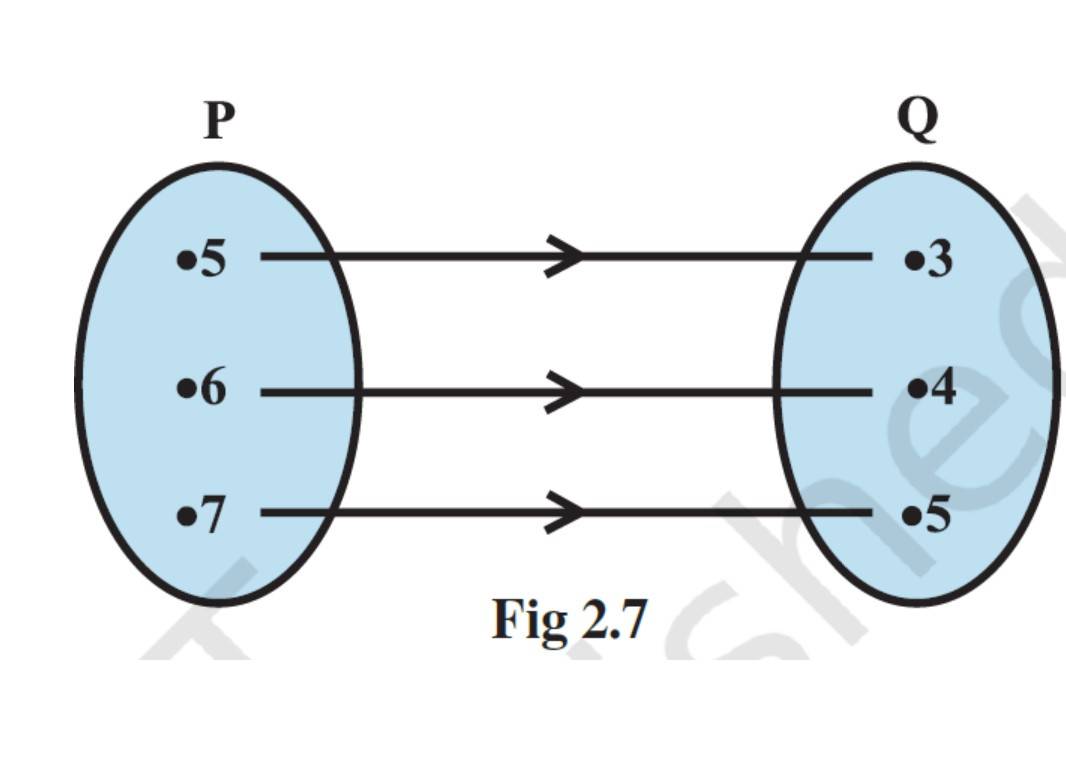Class 11th
Get insights from 8k questions on Class 11th, answered by students, alumni, and experts. You may also ask and answer any question you like about Class 11th
Follow Ask QuestionQuestions
Discussions
Active Users
Followers
New answer posted
6 months agoContributor-Level 10
38. (i) Given, 3x + 2y 12 = 0.
3x + 2y = 12
Dividing both sides by 12 we get,
Comparing the above equation with = we get, x-intercept, a = 4 and y-intercept b = 6.
(ii) Given, 4x - 3y = 6
Dividing the both sides by 6.
Comparing above equation by we get, x-intercept a = and y-intercept, b = -2
(iii) Given, 3y + 2 = 0.
3y = -2
As the equation of line is of form y = constant, it is parallel to x-axis and has no x-intercept.
y-intercept = -
New answer posted
6 months agoContributor-Level 10
13. Given, A= {1,2,3,5}
B= {4,6,9}
R= { (x, y) : the difference of x & y is odd; x A, y B}.
= { (x, y):|x – y| is odd and x A, y B}
= { (1,4), (1,6), (2,9), (3,4), (3,6), (5,4), (5,6)}.

New answer posted
6 months agoContributor-Level 10
12. Given, R = { (x, y): y = x + 5, x is a natural number less than 4; x, y N}
= { (x, y): y = x + 5; x, y N and x < 4}.
= { (1,1+5), (2,2+5), (3,3+5)}
= { (1,6), (2,7), (3,8)}
So, domain of R = {1,2,3}
range of R = {6,7,8}
New answer posted
6 months agoContributor-Level 10
11. Given, A = {1,2,3, …, 14}
R = { (x, y): 3x – y = 0; x, y A}
= { (x, y): 3x = y; x, y A}.
= { (1,3), (2,6), (3,9), (4,12)}
Domain of R is the set of all the first elements of the ordered pairs in R
So, domain of R= {1,2,3,4}
Codomain of R is the whole set A.
So, codomain of R= {1,2,3, …, 14}
Range of R is the set of all the second elements of the ordered pains in R.
So, range of R= {3,6,9,12}
New question posted
6 months agoNew answer posted
6 months agoContributor-Level 10
Exercise 9.3
37. (i) Given, x + 7y = 0.
7y = -x
y = x + 0.
Comparing the above equation with y = mx + c we get, slope, m = - and c = 0, y-intercept
(ii) Given, 6x + 3y - 5 = 0
3y = -6x + 5
y = - x + = -2x +
Comparing the above equation with y = mx + c we get, slope, m = -2 and , y-intercept
(iii) Given, y = 0
y = 0xx + 0
Comparing the above equation with y = mx + c we get, Slope, m = 0 and c = 0, y-intercept.
New answer posted
6 months agoContributor-Level 10
10. Given, n (A * A)=9
n (A) *n (A) = 9.
n (A)2 = 32.
n (A) = 3 .
And (–1,0), (0,1) A * A i.e., A * A = { (x, y), x A, y B}
? A= {–1,0,1}
And A * A= {–1,0,1} * {–1,0,1}
= { (–1, –1), ( –1,0), ( –1,1), (0, –1), (0,0), (0,1), (1, –1), (1,0), (1,1)}
New answer posted
6 months agoContributor-Level 10
9. Given, n (A)=3
n (B)= 2
So, n (Ax B)=n (A).n (B)=3x 2=6
as (x, 1), (y, 2), (z, 1) ∈Ax B= { (x, y), x∈Aand y∈B}.
A= {x, y, z} and B= {1,2}
As n (A) = 3as n (B) = 2
New answer posted
6 months agoContributor-Level 10
36.
Let the given points be A (3, 0), B (–2, –2) and C (8, 2). Then by two point form we can write equation of line passing point A (3, 0) and B (–2, –2) as
If the three points A, B and C are co-linear, C will also lieonm the line formed by AB or satisfies equation (1).
Hence, putting x = 8 and y = 2 we have
L.H.S. = 2 * 8 – 5 * 2 – 6
= 16 – 10 – 6
= 0 = R.H.S.
The given three points are collinear.
New answer posted
6 months agoContributor-Level 10
8. A Given, A= {1,2}
B= {3,4}
So, A* B= { (1,3), (1,4), (2,3), (2, 4)}
i.e., n (A *B)=4
A *B will have subset =24=16.They are,
Φ, { (1,3)}, { (1,4)}, { (2, 3)}, { (2,4)}, { (1,3), (1,4)}, { (1,3), (2,3)},
{ (1,3), (2, 4)}, { (1,4), (2, 3)}, { (1,4), (2, 4)}, { (2,3), (2, 4)},
{ (1,3), (1,4), (2, 3)}, { (1,3), (1,4), (2,4)}, { (1,3), (2,3), (2, 4)}, { (1,4), (2,3), (2,4)},
and { (1,3), (1,4), (2,3), (2,4)}
Taking an Exam? Selecting a College?
Get authentic answers from experts, students and alumni that you won't find anywhere else
Sign Up on ShikshaOn Shiksha, get access to
- 65k Colleges
- 1.2k Exams
- 679k Reviews
- 1800k Answers
